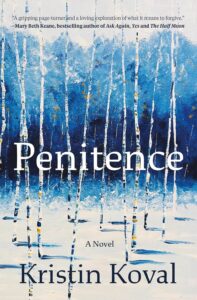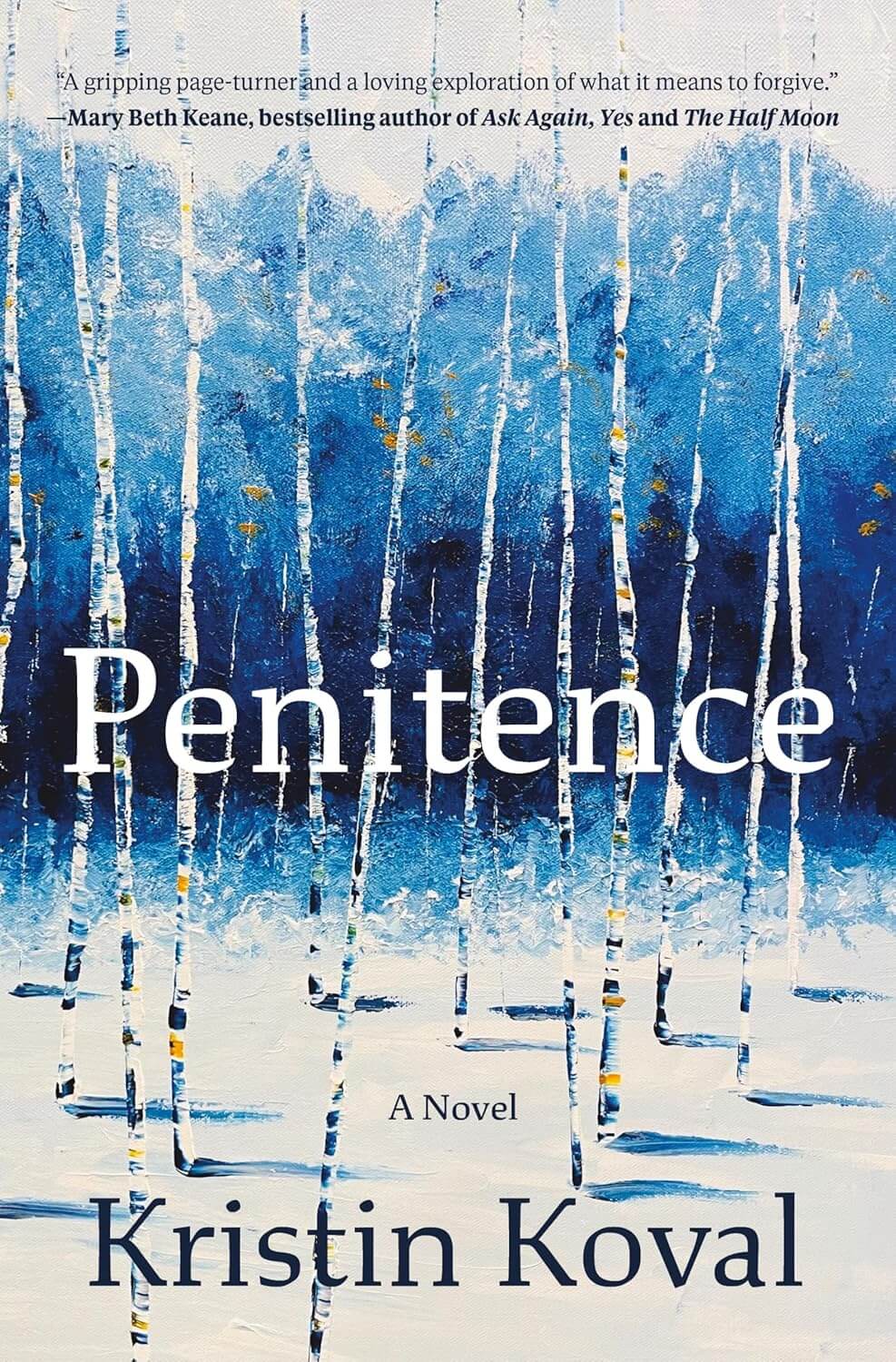Life happens
Chasing dreams and facing reality in Penitence
Chasing dreams and facing reality in Penitence
Content warnings for this novel: Fratricide, child loss, infidelity, incarceration, 9/11 trauma
On one typical October evening in her Colorado hometown, 13-year-old Nora eats dinner with her family, plays a game on her Xbox and refuses to brush her teeth before bed. Then, as her family settles in for the night, she walks into her brother Nico’s bedroom and shoots him three times in the chest. So begins Kristin Koval’s gripping debut novel Penitence, a story that explores why people choose to kill and how the aftermath of such a crime fractures individuals, families and entire communities.

Kristin Koval
Koval, a Boulder-based writer and former lawyer, tells this story through alternating perspectives. Some chapters belong to Nora and her experience in a juvenile detention center while she awaits trial. Others are from the points of view of her parents, Angie and David, as they struggle through their heartbreak, confusion and anger. Still others follow her two lawyers, Martine and Julian (once Angie’s high school sweetheart), as they, mother and son, fight to navigate harmful media attention, an unforgiving DA and the families’ interpersonal conflicts.
While each character has a personal story arc, the true protagonist of Penitence is Nora’s mother, Angie. Through chapters that jump back and forth in time, the reader watches Angie grow from adolescence into adulthood. In her story, as in real life, stagnancy is paired with motivation to succeed, selflessness with selfishness. When Angie is a teenager in Lodgepole, Colorado—a fictional town modeled after small ski towns in the Rockies—she must contend with the loss of a family member and her complicated relationship with her high school sweetheart—the same man who many years later becomes one of her daughter’s lawyers.
Angie’s time living in a New York City apartment, dreaming of becoming a successful artist, forms the apex of her internal conflict later in life as a working small-town mother, daughter and caregiver. Her storyline is a key contribution to one of the central questions of the novel: how much of yourself should you give to the people you love and how much should you save for yourself? Angie eventually leaves New York to return to her home in the Colorado mountains and reflects on her time in NYC frequently as she grapples with the loss of her son, the immense shift in her relationship with her daughter and the splintering of her marriage. At one point, her ex-partner, attorney Julian, is in her house talking about Nora’s case when he notices that the art she did years before is nowhere to be seen. He confronts her:
” ‘Where—where is the rest of your work? What happened to your paintings, the ones Idara and I shipped to you after you left [New York]?’
What happened to her paintings was life. … She was too busy to paint anything new, between being a mother and teaching, managing [her mother’s] finances and medical care, and  she assumed she could paint later, that life would get easier when the kids got older.
she assumed she could paint later, that life would get easier when the kids got older.
Of course, her life didn’t get easier; it got more difficult in ways she could never have imagined. But this moment when her former love asks about her paintings (all in the basement now, she reveals) sparks change.”
With one child dead and the other incarcerated, Angie suddenly has hours of loneliness and silence to fill each day. She wonders about her identity as an artist. She brings watercolors to the detention center when she visits her daughter and during the short blocks of time they have together, Angie teaches Nora artistic techniques. Together they create images out of nothing. On painting again, Angie reflects: “Hours fly by… muscle memory in her hands and fingers returns her to abstraction, the idea of an eye in an aspen tree, the scar formed when the tree self-prunes and drops a smaller branch that doesn’t receive enough sunlight.”
For most of the story, Angie clings to her anger and resentment like a child with a shredded, childhood safety blanket, but eventually they become too burdensome for her to carry. Instead she must learn to set them down and move through the world with empty hands ready to create. She must learn to forgive her family, her daughter and herself, and she must learn to build up all three.
Each character in Penitence is achingly real. Their cares and fears are relatable, and Koval does a beautiful job weaving their stories together in ways that are both complementary and contrary, just like relationships in life itself.
While Marissa Harwood was born in Omaha, Nebraska, she moved to Colorado when she was four days old and considers herself a native. She grew up in the shadow of the Rocky Mountains and spent much of her childhood camping, hiking and building forts in the woods. She earned a BA in English and a Secondary Teaching License from the University of Colorado at Boulder. Later, she attended Western Colorado University and earned an MFA in genre fiction. She has taught English at three K-12 schools and two Colorado colleges. Currently, she lives in Greeley, where she teaches high school, plays with her daughter (a true CO native) and reads a lot of books. She hopes to earn a doctorate in the near future.
Click here for more from Marissa Harwood.

